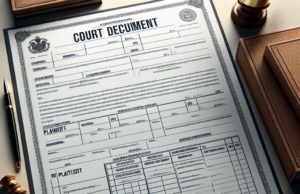
IDAHO DIVORCE LAWS & REGULATIONS UPDATE 2023
A DECADE OF CHANGE: AN OVERVIEW OF IDAHO’S DIVORCE LAWS AND REGULATIONS TIMELINE (2013-2023)
Over the past ten years, Idaho’s divorce laws have experienced significant transformations, reflecting the state’s commitment to modernizing its legal framework while ensuring fairness, transparency, and the well-being of families engaged in divorce proceedings. From property division to child custody, these changes underscore Idaho’s dedication to addressing the evolving needs of contemporary families. Here’s a concise summary of the key updates in Idaho’s divorce laws and regulations from 2013 to 2023:
2013 – Equitable Property Division Clarification:
– Refinement of property division guidelines for a fair allocation of marital assets.
– Consideration of factors like contributions, marriage duration, and individual requirements.
2014 – Child Custody Focus on Best Interests:
– Adoption of child custody standards centered on the child’s best interests.
– Promotion of collaborative parenting arrangements for effective involvement of both parents.
2015 – Alimony Guidelines Implementation:
– Introduction of alimony guidelines to ensure consistent spousal support decisions.
– Evaluation of factors including marriage duration, financial circumstances, and earning capacities.
2016 – Streamlined Divorce Process:
– Introduction of measures to expedite divorce proceedings, reducing undue delays.
2017 – Strengthened Domestic Violence Protections:
– Enhancement of protections for domestic violence victims during divorce proceedings.
2018 – Comprehensive Parenting Plans Focus:
– Emphasis on detailed parenting plans outlining custody, visitation, and child support arrangements.
– Prioritization of the child’s well-being and fostering a stable environment.
2019 – Technological Advancements:
– Acceptance of digital documentation and electronic signatures for more efficient divorce procedures.
2020 – Regular Child Support Review:
– Periodic review and potential modification of child support guidelines reflecting economic changes.
2021 – Mediation and Collaborative Approaches:
– Encouragement of mediation and collaborative methods to reduce adversarial litigation.
2022 – Military Divorces Consideration:
– Implementation of measures addressing unique aspects of military divorces, including deployments and benefits.
2023 – Alimony Guidelines Review:
– Assessment of alimony guidelines to ensure equitable and appropriate spousal support.
2023 – Complex Financial Divorces:
– Exploration of specialized guidelines for high-asset or intricate financial divorces.
These changes in Idaho’s divorce laws illustrate the state’s proactive approach to addressing the evolving dynamics of divorce. They emphasize fairness, transparency, and the well-being of all parties involved. As Idaho’s legal landscape continues to evolve, it is essential for stakeholders, policymakers, and the general public to engage in informed discussions that uphold principles of justice and equity, supporting families as they navigate the complexities of divorce proceedings.
Residency and Filing Needs
There are some aspects of divorce in Idaho that you need to know about before proceeding with anything. First off, if one spouse intends to file, that spouse will then be called the ‘Plaintiff.’ The other spouse will be called the ‘Defendant’ in the matter.
Once divorce is eminent, there are a couple requirements in the state of Idaho that need to be met before filing.
• Requirement 1: Plaintiff must be a resident of the state for at least six weeks prior to filing for divorce.
• Requirement 2: Divorce can proceed in the county of either the Plaintiff or Defendant; but if neither spouse can provide proof of residency in the state, proceedings occur in the county where the Plaintiff currently resides.
Reasons for Divorce in Idaho
There are many reasons for it, but for the most part the court separates all reasons into two categories:
• No-Fault Divorce
• Fault Divorce
“No-Fault” basically can mean two things –
1) Irreconcilable Differences
2) Mutual Separation for Five Years or More
“Fault” divorce in Idaho, however, is an entirely different situation.
Grounds for that divorce can include one or more of these as determined by a court of law:
• Adultery
• Extreme Cruelty
• Willful Abandonment
• Intended Neglect
• Habitual Intemperance
• Felony Conviction
• Mental Insanity
Both “No-Fault” and “Fault” divorce have separate stipulations that can affect custody, child support, and spousal support.
The Definition of “Legal Separation” Versus “Divorce”
Of course, both parties to a marriage may elect to “legally separate” instead of proceed through a divorce. What’s the difference?
A legal separation is essentially both parties agreeing to go their separate ways without dissolving the marriage. There are many reasons for doing this, one being the need to retain certain benefits within the marriage agreement that would otherwise be discontinued upon a divorce. For instance: medical insurance.
Typically, though, a legal separation does lead to a divorce agreement, in which case all grounds for divorce move forward, as well as the marriage then becomes dissolved in a court of law along with any other benefits and assets, questions of child custody, parenting time, and support (if children are in fact present).
The Primary Documents For a Divorce in Idaho
They are listed as follows:
• Family Law Case Information Sheet
• Summons
• Marital Settlement Agreement
• Acknowledgement of Service by Defendant
• Sworn Stipulation for Entry of Decree
• Complaint for Divorce
• And Judgment of Divorce
Divorce in Idaho : Property Distribution
When it comes to divorce in Idaho, it’s important to know that the state favors “community property” standards. “Community property” generally means assets acquired during the marriage. Typically the assets are split 50/50 between both parties.
The court may encourage both the Plaintiff and Defendant to come to an agreement about property distribution. If there’s no agreement, the court will decide.
In addition, the court may also award the wife her former or maiden name upon agreement of the divorce.
Divorce in Idaho : On the Subject of Spousal Support
This issue may only be relevant if the court or both parties see a need for either party to support the other financially for any reason either on a temporary or permanent basis.
Divorce in Idaho : Dealing With Child Custody
Generally speaking, parents can come to an agreement on this matter regarding divorce in Idaho in several ways:
• Joint Physical Custody
• Sole Physical Custody
• Joint Legal Custody
• Sole Physical Custody
“Joint Physical Custody” is essentially sharing custody of the child(ren) in terms of where the child(ren) may live: either in mother’s residence, or father’s residence. Child(ren) retains two addresses. Both parties are equally responsible for the well-being of the child(ren) as well as for the education of the child(ren).
“Sole Physical Custody” is when one party retains physical custody of child(ren) and the other party retains “Visitation Rights.”
“Joint Legal Custody” is when both parents share the right to make important decisions in the life/lives of the child(ren), which may include legal name, lifestyle, needs, etc. etc.
“Sole Legal Custody” is when only one parent retains the right to make important decisions in the life/lives of the child(ren).
Divorce in Idaho : How to Determine Child Support If Necessary
Typically, the non-custodial parent pays child support. The Income Shares Model is employed to determine the amount. By combining W2’s and other worksheets, an amount is determined that would best suit the needs of the child(ren) without unfavorable financial problems on the non-custodial party.
Generally speaking, both parties may agree to an amount. But in the event that a Plaintiff and Defendant don’t, the court may utilize state support guidelines to arrive to a decision as to how much support is necessary for the child(ren).



























